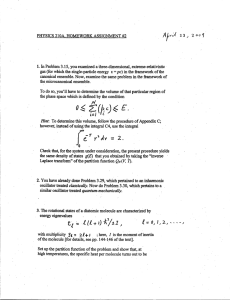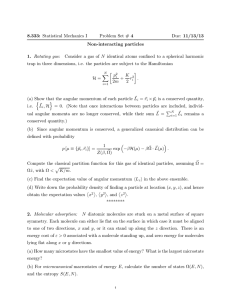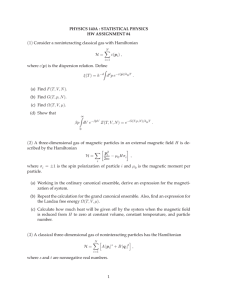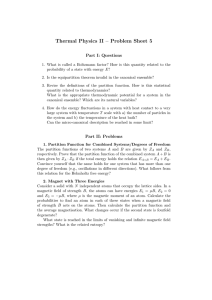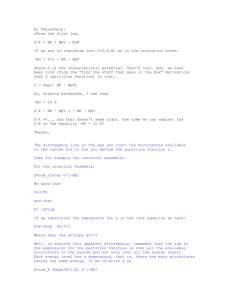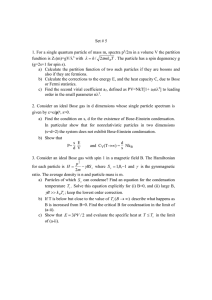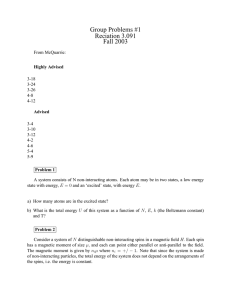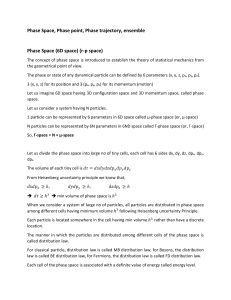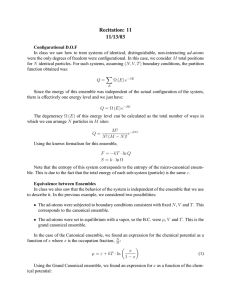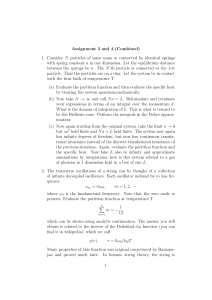In problem 2 of P.S. 5, we define the relevant... (magnetic field) must be held constant. In the solutions,...
advertisement
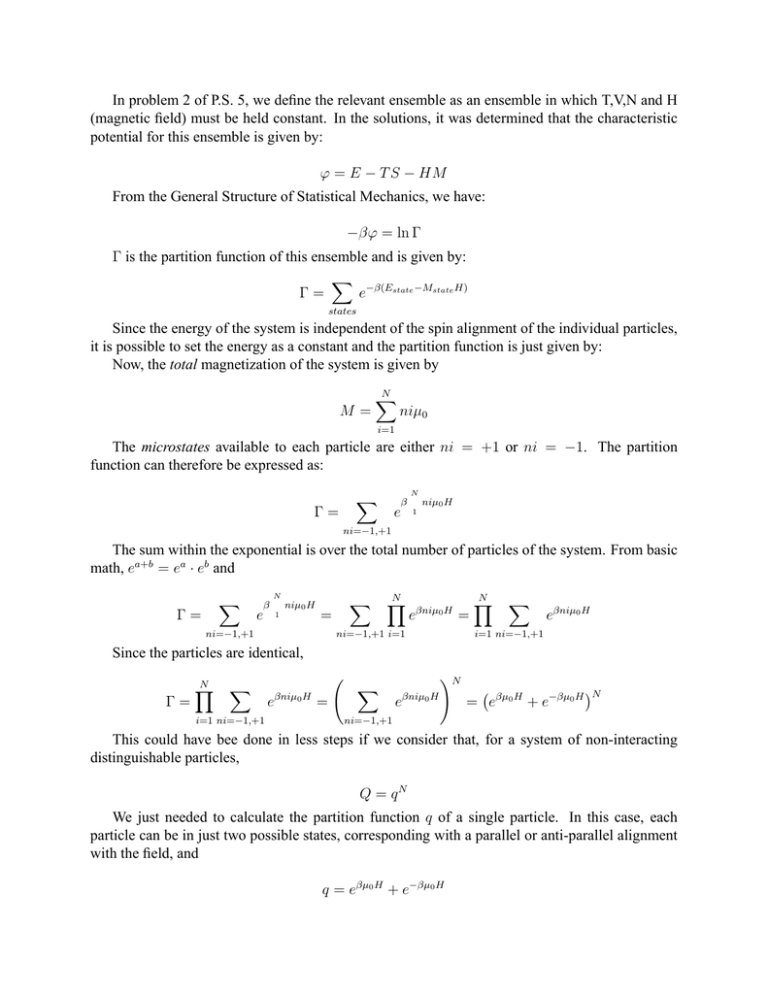
In problem 2 of P.S. 5, we define the relevant ensemble as an ensemble in which T,V,N and H (magnetic field) must be held constant. In the solutions, it was determined that the characteristic potential for this ensemble is given by: ϕ = E − T S − HM From the General Structure of Statistical Mechanics, we have: −βϕ = ln Γ Γ is the partition function of this ensemble and is given by: � Γ= e−β(Estate −Mstate H) states Since the energy of the system is independent of the spin alignment of the individual particles, it is possible to set the energy as a constant and the partition function is just given by: Now, the total magnetization of the system is given by M= N � niµ0 i=1 The microstates available to each particle are either ni = +1 or ni = −1. The partition function can therefore be expressed as: � Γ= β e N 1 niµ0 H ni=−1,+1 The sum within the exponential is over the total number of particles of the system. From basic math, ea+b = ea · eb and � Γ= β e N 1 niµ0 H � = ni=−1,+1 N � βniµ0 H e = ni=−1,+1 i=1 N � � eβniµ0 H i=1 ni=−1,+1 Since the particles are identical, Γ= N � � i=1 ni=−1,+1 � eβniµ0 H = � �N eβniµ0 H �N � = eβµ0 H + e−βµ0 H ni=−1,+1 This could have bee done in less steps if we consider that, for a system of non-interacting distinguishable particles, Q = qN We just needed to calculate the partition function q of a single particle. In this case, each particle can be in just two possible states, corresponding with a parallel or anti-parallel alignment with the field, and q = eβµ0 H + e−βµ0 H
